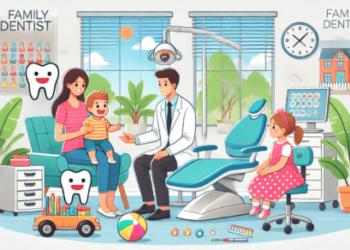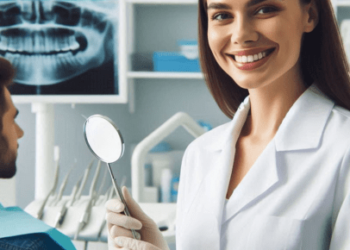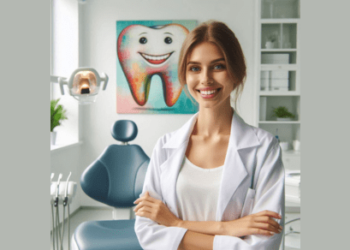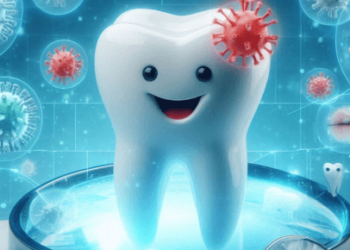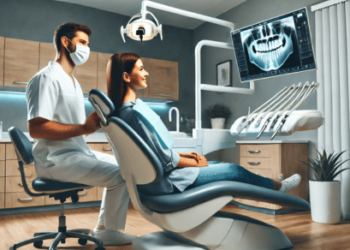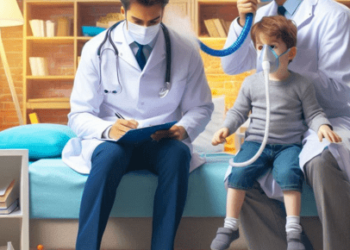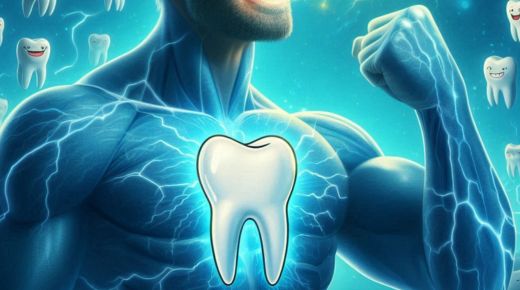
Bruxism, habitual grinding or clenching of the teeth, and Temporomandibular Joint (TMJ) disorders, a condition affecting the jaw joint, are two interconnected oral health issues. Research suggests that bruxism is a significant contributing factor to TMJ disorders, leading to debilitating symptoms such as jaw pain, headaches, and facial tension.
In this article, the dentist in Englewood, NJ delves into the relationship between bruxism and TMJ disorders, exploring causes, symptoms, diagnosis, and treatment options.
Understanding the Bruxism-TMJ Connection
Bruxism’s repetitive grinding and clenching motions put excessive stress on the TMJ, leading to inflammation, strain, and damage. This, in turn, can cause TMJ disorders, characterized by:
- Pain and tenderness in the jaw, face, and temples
- Clicking, popping, or locking of the jaw
- Difficulty chewing or opening the mouth
- Headaches and migraines
Causes of bruxism-related TMJ disorders
Here are the causes of bruxism-related TMJ disorders:
Primary Causes
- Misalignment: Improper bite alignment puts uneven stress on the TMJ.
- Stress and anxiety: Tension triggers bruxism, increasing TMJ strain.
- Sleep patterns: Nocturnal bruxism leads to prolonged TMJ stress.
- Nutritional deficiencies: Inadequate magnesium, calcium, and vitamin B12 levels.
Secondary Causes
- Dental issues: Malocclusion, tooth wear, or dental work.
- Jaw injury: Trauma or fracture affecting TMJ function.
- Musculoskeletal disorders: Fibromyalgia, arthritis, or other conditions.
- Neurological factors: Parkinson’s disease, dystonia, or other neurological conditions.
Lifestyle Factors
- Caffeine and nicotine: stimulants exacerbating bruxism.
- Alcohol consumption: Relaxing jaw muscles, leading to bruxism.
- Poor posture: Straining jaw and TMJ.
- Chewing habits: Frequent gum chewing or nail biting.
Medical Conditions
- Gastroesophageal reflux disease (GERD): Acid reflux triggering bruxism.
- Sleep apnea: Disrupted sleep patterns contributing to bruxism.
- Hormonal changes: Menopause, pregnancy, or thyroid disorders.
- Medications: Antidepressants, stimulants, or sedatives.
Other Factors
- Age: Bruxism prevalence increases with age.
- Genetics: Family history of bruxism or TMJ disorders.
- Environmental factors: Noise, stress, or other environmental stimuli.
Risk Factors
- Family history: First-degree relatives with bruxism or TMJ disorders.
- Previous TMJ injury: Trauma or surgery affecting TMJ function.
- Other oral habits: Teeth grinding, clenching, or nail biting.
Symptoms of bruxism-related TMJ disorders
Here is a concise list of symptoms of bruxism-related TMJ disorders:
Common Symptoms
- Jaw pain or tenderness
- Clicking, popping, or locking of the jaw
- Difficulty chewing or opening the mouth
- Headaches and migraines
- Facial tension and discomfort
- Earaches or ear ringing
- Tooth wear or chipping
- Difficulty swallowing
- Jaw stiffness or limited mobility
- Neck and shoulder pain
Advanced Symptoms
- TMJ joint inflammation or degeneration
- Disc displacement or damage
- Bone loss or resorption
- Numbness or tingling in the face or jaw
- Difficulty speaking or pronouncing words
- Chronic fatigue or sleep disturbances
- Depression or anxiety
Emergency Symptoms
- Sudden, severe jaw pain
- Locking or dislocation of the jaw
- Difficulty breathing
- Facial swelling or bruising
Treating bruxism-related TMJ disorders
A multidisciplinary approach addresses both bruxism and TMJ disorders:
Conservative treatments
- Occlusal splints: Custom-made splints redistribute forces, alleviating TMJ stress.
- Bite adjustment: Adjusting the bite to achieve proper alignment.
- Relaxation techniques: Stress management through meditation, deep breathing, or yoga.
- Physical therapy: Gentle exercises to relax jaw muscles.
- Heat and cold therapy: Applying heat and cold packs to relieve pain
- Massage therapy: Massaging jaw, neck, and shoulder muscles
Dental treatments
- Dental Restoration: Repairing damaged teeth with biocompatible materials.
- Orthodontic treatment: Correcting misalignment
- Crowns and bridges: Restoring the proper shape and function of teeth
Medical treatment
- Muscle relaxants
- Pain relief medications
- Botox injections
- Anti-anxiety medications
Alternative therapies
- Acupuncture
- Chiropractic care
- Biofeedback therapy
Surgical options
- TMJ arthroscopy
- TMJ arthroplasty
- Discharge replacement
Lifestyle changes
- Stress management through relaxation techniques
- Proper sleep habits
- Maintaining adequate nutrient levels
The link between bruxism and TMJ disorders is undeniable. By understanding the causes, symptoms, and treatment options, you can take proactive steps to prevent and manage these interconnected conditions. A holistic approach, combining dental care, stress management, and nutritional balance, offers hope for those suffering from the debilitating effects of bruxism-related TMJ disorders.

